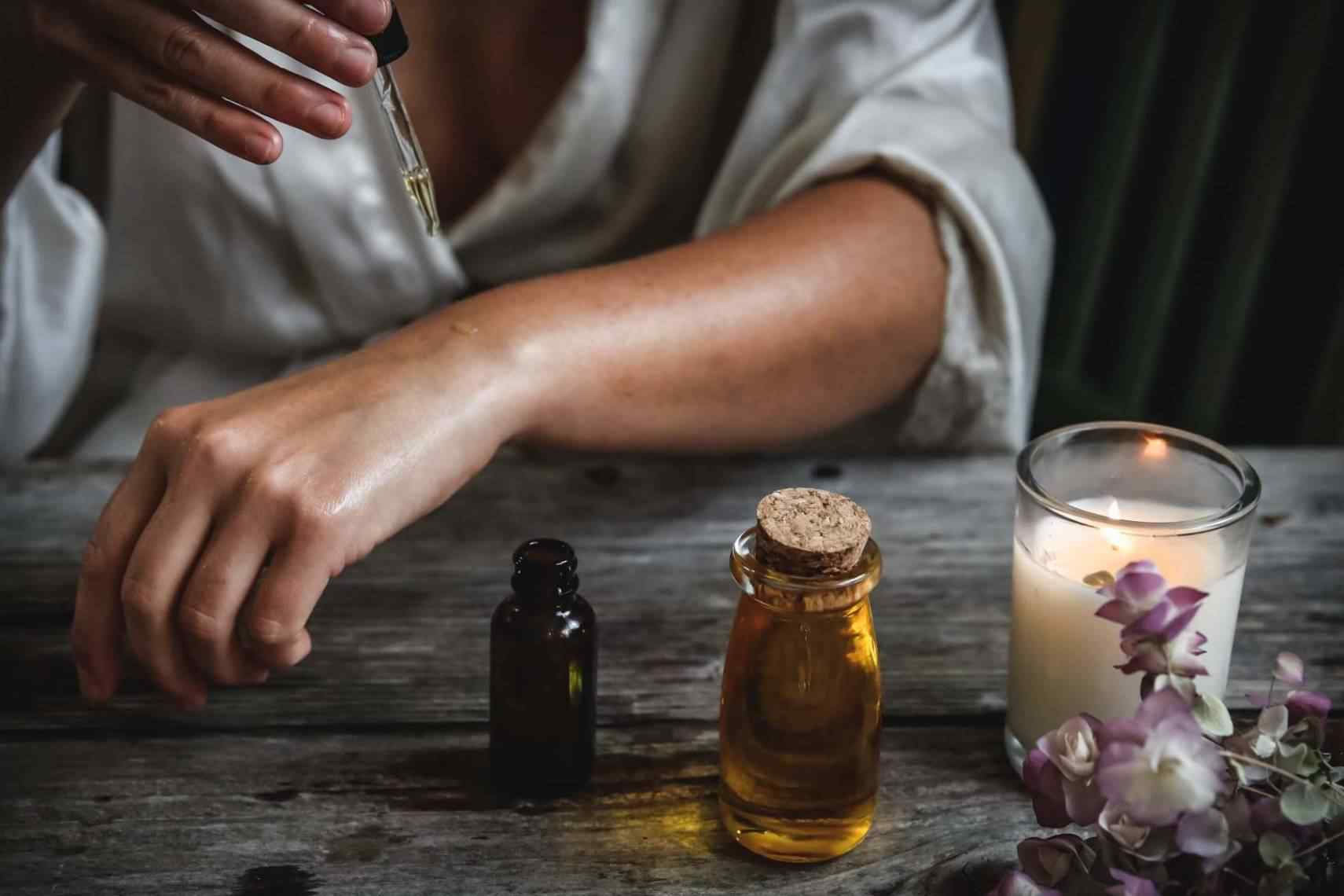It’s not much of a secret anymore that using terpenes has the potential to provide an array of wellness benefits — at least we hope it’s not, considering how much we’ve talked about it. However, you might be surprised to learn just how terpenes benefit your skin specifically.
With most natural skin care formulations containing botanicals and almost all plants containing terpenes, it makes sense that some terpenes are particularly good for your skin. We don’t just mean when they’re consumed or inhaled either, but applied topically, as well.
The skin is the largest organ in your body and a huge indicator of your internal health. For instance, dry skin suggests dehydration while dull, drabby skin may suggest exhaustion. It also serves as the frontline protector of all the important, internal parts that we need to function.
How do terps help your skin?
No matter how many promising viral natural skin care products you research and try, sometimes it can seem like you have zero control over your skin woes. Breakouts, dry patches, greasiness, fine lines, eczema — we’ve all been there.
The good news is there are botanical terpenes that are really good for your skin. Some studies show that when used correctly, they have the potential to protect and rejuvenate the skin. They can restore brightness, repair barrier function, and improve elasticity and strength.
Not all terpenes are created equal though. While some absorb more readily through the skin than others, their effectiveness also varies. This is dependent on the type of natural skin care products and the type of terpenes. For instance, one study demonstrated that Linalool absorbs well via hydrogel, oil, and emulsion-based products. Other terps. however, like Citronellol and Alpha-Pinene, only absorb via hydrogel applications.
In other words, just because you’re slathering on a bunch of terpenes that are supposedly good for your skin all at once, it doesn’t necessarily guarantee you a perfect complexion. As nice as that would be, it does take a little more strategy.
While the skin care benefits of terpenes can be effectively delivered topically, natural skin care experts also know that true skin health starts from the inside. That is evident in the sudden introduction of supplements and vitamins that many brands are now beginning to offer. Terpenes can work in the same way — by tackling skin care issues from the inside out.
So which terps work best for your skin?
When it comes to choosing terpenes that are good for your skin, you want to be mindful about which ones you incorporate. You have to consider their effects, their scent, and their most optimal method of absorption. It can be a little overwhelming when you’re just getting started. Fortunately for you, we’re experts.

When you start using terpenes in your natural skin care routine, a little bit goes a long way! Some terpenes that may prove beneficial include:
- Myrcene has an earthy, fruity, clove-like scent and is found in hemp, mangos, hops, lemongrass, and other botanicals. In skin, it has been shown to have hypoallergenic, antimicrobial, anti-inflammatory, anti-aging properties, and helps relieve pain. Some research suggests that it may even have anti-proliferative action on cancer cells.
- Limonene is the terpene responsible for giving citrus their unmistakable, zesty taste and aroma. In skin, it has been shown to have anti-inflammatory and anti-anxiety properties. It aids in improving stress-related skin conditions, works well with most other terpenes that are good for your skin, and helps speed up absorption. However, it can cause irritation in those with sensitive or allergy-prone skin.
- Humulene, or Alpha-caryophyllene, is found in hemp, hops, clove, sage, black pepper, coriander, and ginseng. It is analgesic, anti-bacterial,and anti-inflammatory. Like Myrcene, it may also have antiproliferative properties.
- Beta-caryophyllene is found in hemp, rosemary, oregano, cinnamon, and other plants or herbs. Studies show it has analgesic and anti-inflammatory properties and can also promote wound healing. In terms of natural skin care, it works best by being applied topically directly over an affected area.
- Linalool is typically associated with lavender, however, it can be found in hundreds of plants, herbs, and spices. It is an antibacterial, analgesic, and antibacterial immunostimulant that helps reduce inflammation, and works well with most ingredients and other terpenes that are good for your skin. While it smells wonderful, sensitive skin types may experience mild irritation.
- Pinene (alpha and beta) is responsible for the piney-fresh scent in pine trees, pine needles, and other forest plants. It can also be found in conifer trees, orange peels, allspice, ginger, nutmeg, rosemary, sage, basil, dill, and parsley. Its pleasant, unmistakable scent makes this a favorite in terms of fragrance in natural skin care. In the skin, pinene acts as an analgesic, anti-bacterial, anti-fungal, anti-inflammatory, antioxidant, and antiviral.
- Camphor, most commonly found in the wood of Camphor trees, has a strong, woody aroma and taste. In terms of skin, it provides a wide variety of benefits. It is anti-inflammatory, antifungal, antispasmodic, and more. Some studies show that Camphor also helps improve UV-induced wrinkles and promotes wound healing.
These are just a few of the most common terpenes that are good for your skin. For the most part, they’re all generally safe for adults when used correctly. To be on the safe side when trying any new skin care product, always patch-test before applying it to a larger or more visible area.
Terps + Natural Skin Care = a match made in heaven.

Getting a skin care routine down is hard enough, and you might think throwing in a new element is the last thing you need. However, we urge you to give terpenes a fair chance. There’s a reason that skin care and wellness companies are taking note of their benefits and using more terps in their formulations.
We know terpenes are here to stay. Once you incorporate them into your natural skin care routine, we have no doubt you’ll feel the same.
So which terpene do you want to try first?

